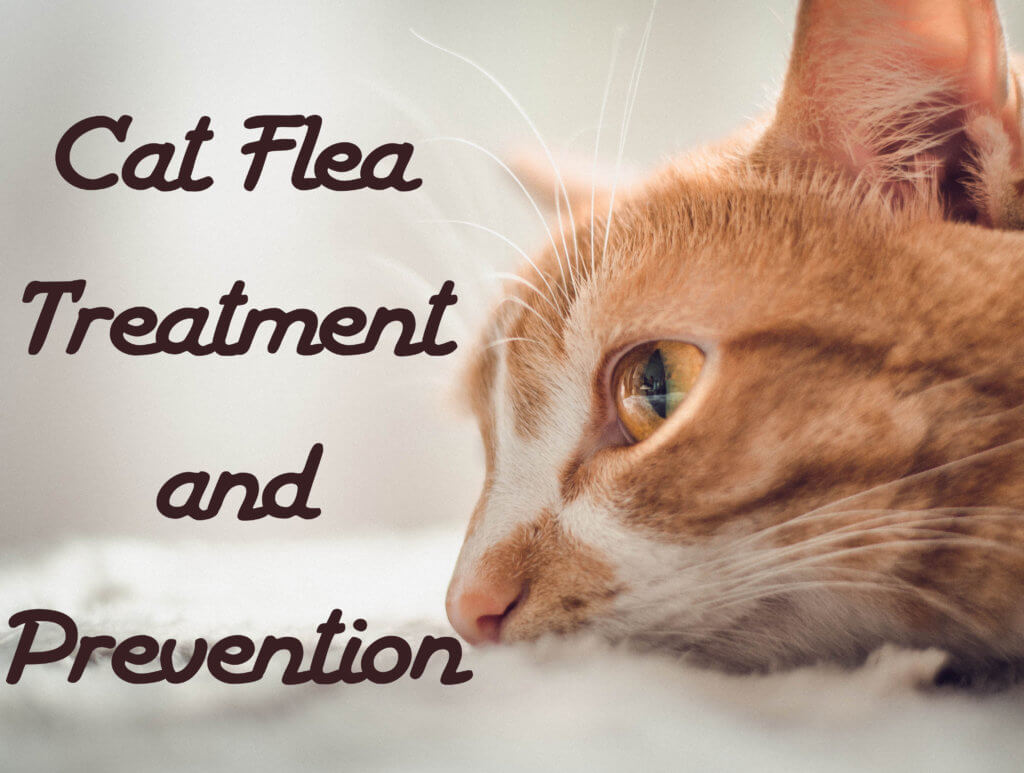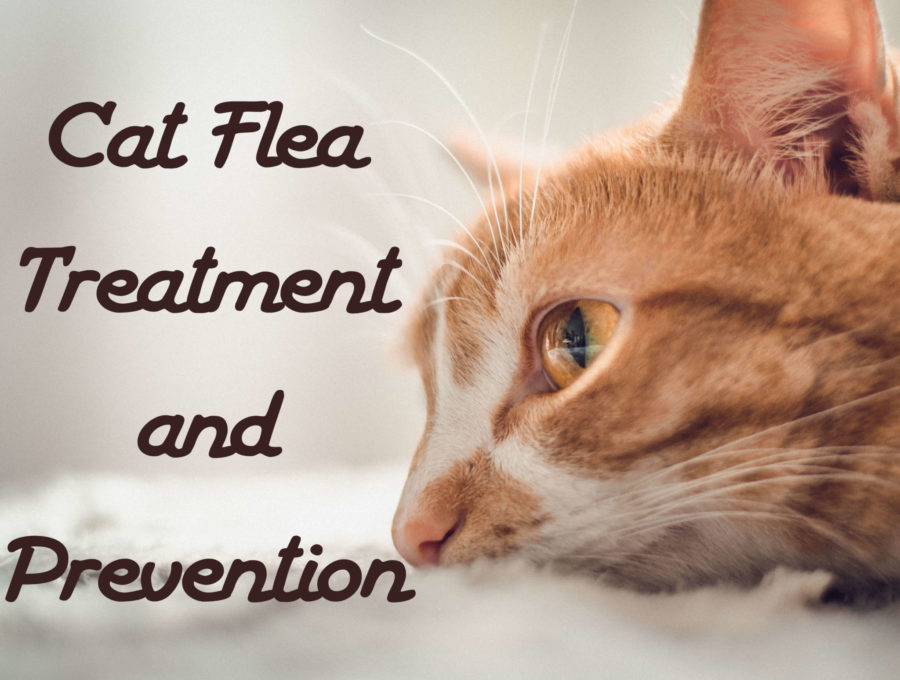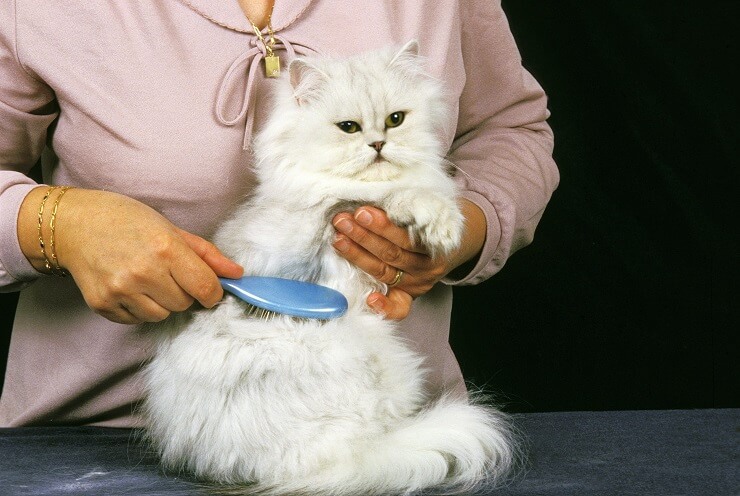Cat Flea Treatment And Prevention
This page contains affiliate links. We may earn money or products from the companies mentioned in this post through our independently chosen links, which earn us a commission. Learn More

Has your cat become infested with fleas and his buggy skin is keeping you up all night? If your cat scratches, chews his skin or seems restless, it could mean that he has fleas. You can ease his itching pains by knowing how to spot, destroy and prevent fleas on your cat and in your home.
Even the cleanest cats can end up with a flea infestation. It only takes one flea from a friendly stray or neighbor pet to turn yours into a flea bag.
Even if a human or cat walks outside, he can pick up the fleas and bring them inside. Just one flea can lay quite a few eggs and when the eggs hatch, you will have a full scale infestation.
Smart cat owners take a proactive approach and prevent fleas before they even appear. Sometimes putting a monthly flea product on your cat is not enough, making environmental treatments equally important.
Signs
Most cat owners wait until they see fleas before they begin fighting them. If you see tiny black or dark brown insects hopping around your cat or his bedding, there is little doubt that your cat has fleas. If you see specks of blackish dirt on your cats fur this is evidence that fleas are hiding somewhere on your cat. Watch for signs of movement in his fur as well.
To look for fleas, you may want to try a flea comb. Carefully comb through your cat’s fur, paying close attention to the hair around his head and on his belly.
Fleas like to hide around a cat’s ears, eyes, and nose and tend to hang out in the creases where the legs and body meet.
Treatment
To be successful in treating fleas, it should be done on 2 fronts. Target the cat and his environment. Treating your cat will get rid of the fleas and treating his surroundings and sleeping spots will eliminate eggs, larvae and some pupae.
In order to get your cats fleas under control, you can use one of the liquid spot-on flea treatments, flea collars, flea and shampoos. If your house has also become flea infested, you may need to use powder or spray on your cat’s bedding, your carpets and any upholstered furniture. If all else fails, you can use a flea and tick bomb on your house, but be sure to keep your pets out of the building for at least twenty four hours.
Spot on Flea treatments are an effective way of controlling fleas on cats. A drop of the product is applied between the cat’s shoulder-blades. In time the flea treatment migrates over most of the cat’s body because of oils on the skin of and the effective grooming of the cat. These spot on treatments are usually applied once a month and there are many different brands to choose from, like Advantage II. It kills on contact and eliminates the flea, larvae and eggs.
Flea collars are another option to repel and kill fleas by using an insecticide saturated collar. Flea collars contain insecticides which can poison your cat if he chews on it, which is a definite drawback. Sometimes the skin gets irritated where the collar rubs or the cat reacts badly to the collar. To work properly the collar must be properly adjusted and there is always the danger of choking if the cat is allowed outside and the collar gets caught.
There are many formulations of sprays and powders for flea treatment. Some can be dangerous and toxic while others are relatively benign. Sprays and powders have an added disadvantage of inhaling or getting them in your or your cat’s eyes or mouth being dangerous.
Brands with Diatomaceous Earth, with or without pyrethryn, have been used effectively and are relatively non toxic. Sprays that work the best have the ingredient methoprene, but use food grade formulations from reliable companies such as Adams Flea and Tick Spray.
Fleas will fall off a cat quite quickly and it should remain effective for 3 months. Your cats bedding should be sprayed or powdered and vacuumed, as soon as the cat has been treated. Regardless of safety labels, never breathe in the powders and sprays while applying and vacuuming.
There are many brands of medicated shampoos that kill fleas on contact. It can be very effective short term solution and will kill all the adult fleas on your cat. Be aware the fleas will run to the dry head of the cat but can be picked up with a medicated cloth.
You may also apply a ring of wet sudsy shampoo around the neck, to create a barrier, before the cat is submerged in water. Very little insecticide remains on the cat once the shampoo is rinsed off. Gloves should be worn during the shampooing process and should be repeated monthly.
Prevention
The best way to control fleas is to prevent them all together. Using products like shampoos, collars, spot treatments and powders keep fleas away and can prevent a flea problem from developing. A quality oral flea tablet for cats will aid in the elimination and prevention of fleas within 4 hours.
The medication is excreted through your cat’s skin and once a flea bites, the flea becomes paralyzed resulting in death. Some of these medications kill adult fleas only while others can also kill flea larvae, interrupting the life cycle. Once the fleas have been killed, monthly dosing will ensure that your cat remains flea-free.
With the help of Xanax a lot of people have managed to overcome the illness like an anxiety disorder, which is a serious disorder that is not possible to cure without a proper medicine. Xanax is a vary pill against anxiety. People who use Xanax (Alprazolam) are very happy to find such a pill which is very effective and has no side effects.
You may want to use a pest control insecticide to prevent outdoor fleas in your yard. Always follow the directions on the product label and make sure to abide by all safety warnings. Most flea pesticides and insecticides come in the form of hose sprayers or tank pumps.
You can also hire a professional to administer the treatments, but if you prefer to do it yourself, be sure to cover up by wearing a dust mask, protective clothing and gloves. Also remove any toys from yards before spraying and keep children and pets off the treated areas until dry (or until the product instructions indicates it is safe).
Most applications need to be repeated monthly for prevention and two to three weeks after your first round.
Conclusion
Controlling fleas is a multi-phase approach. If all else fails, talk to your vet for the latest in flea treatments for your cat. If you still find fleas around the house, you might need an exterminator to address the problem.




